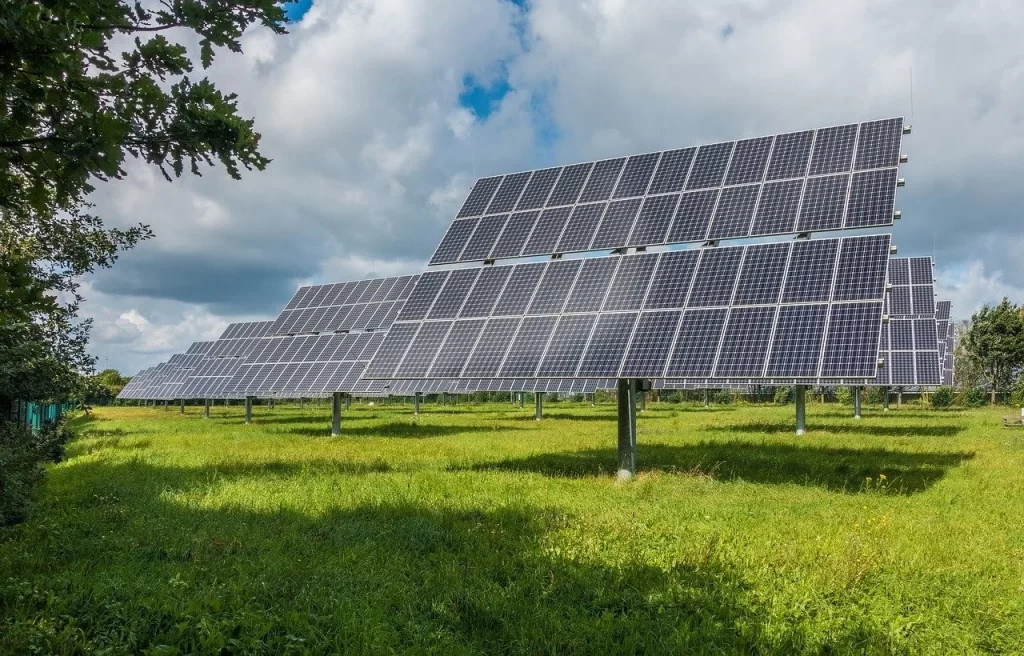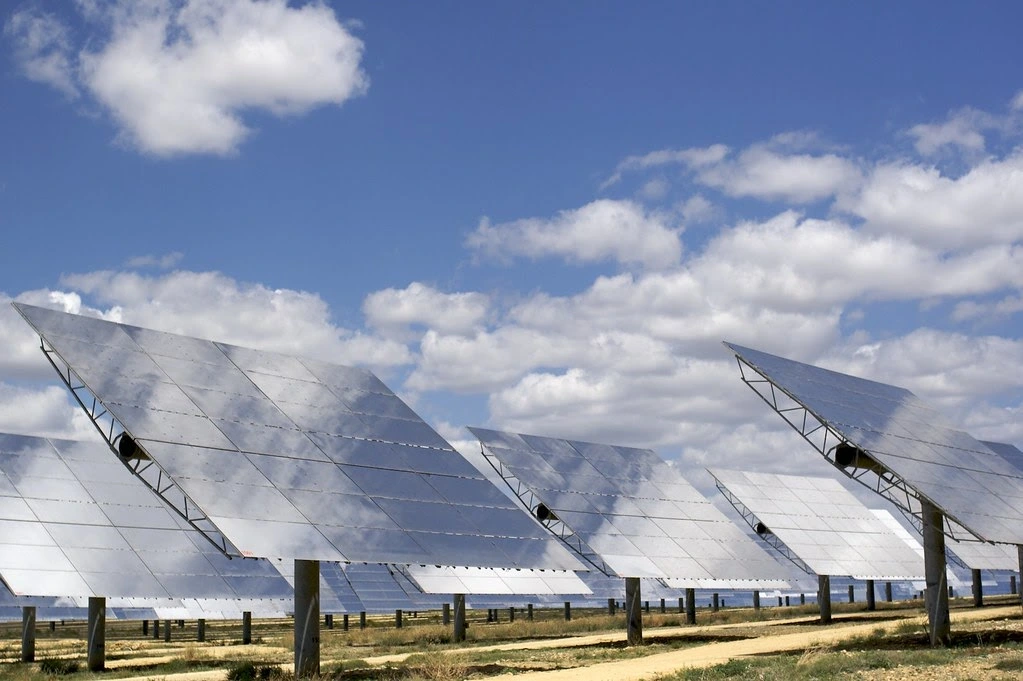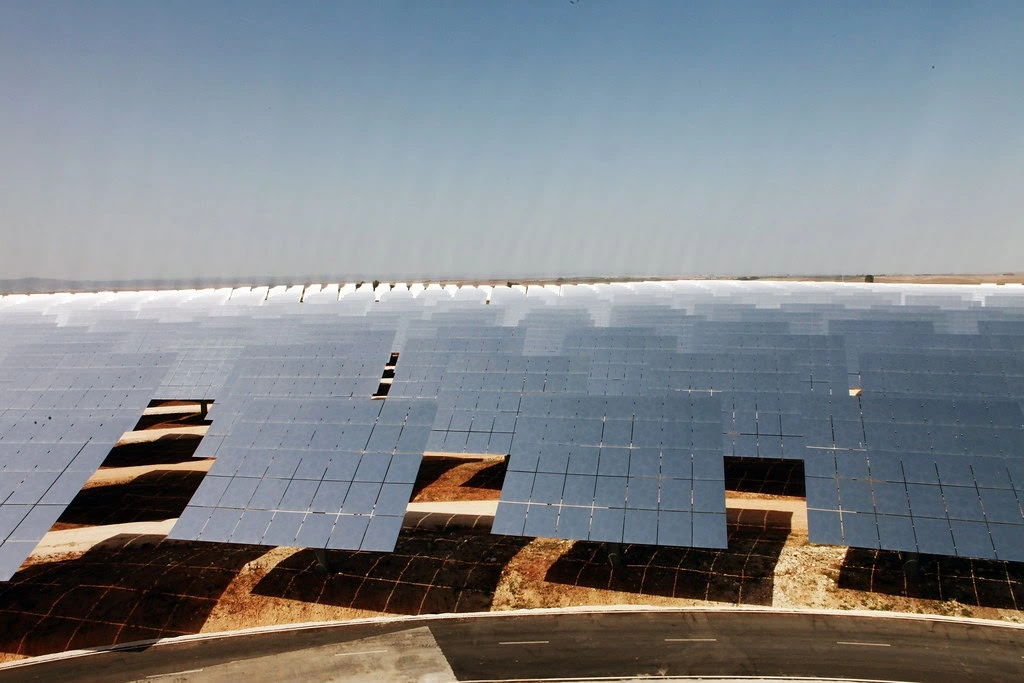The over-dependency on non-renewable sources of energy has led to risks of exhaustion of our fuel reserves on earth. At this rate of exploitation of oil resources, we will soon run out of them, and the only source of energy to keep the world running will be up on the sky, i.e. the sunlight. The good news is that the sun is the most abundant source of power in the world!
Mankind may deal with the issue of energy shortages when it happens, but there are more serious environmental concerns that have become evident as the global economy is largely dependent on fossil fuels.
It’s time the world takes a serious look at alternative energy sources to fossil fuels. They are the key to saving our planet.
The excessive use of these resources has unleashed greenhouse gas emissions into the atmosphere, thereby triggering global warming which has become a serious problem for the whole world.

Human civilization has harnessed the power of the sun since a long time ago. Scientists have been exploring different methods of using solar power as a reliable, renewable, and environment-friendly energy source. The global movement towards clean energy has powered innovation in the field of solar energy technology.
In this context of the energy crisis, the solar thermal power plant has emerged as a cost-efficient and sustainable clean-energy solution.
Table of Contents
- What is Solar Thermal Power Plant?
- Types of Solar Thermal Power Plants
- Pros of Solar Thermal Power Plants (Advantages)
- Cons of Solar Thermal Power Plants (Disadvantages)
- The Future Ahead
- Final Thoughts
What is Solar Thermal Power Plant?
When we think about solar energy, the most common picture that comes to our mind is the solar panel, technically known as a photovoltaic (PV) system. But that’s not what the solar thermal power plant is.
The solar thermal power plant system is based on the 3Cs (concentration, collection, and conversion) principle to generate electricity. That’s why it is also known as Concentrated Solar Power-generation technology (CSP), which is very much different from the PV system.
A solar thermal power system is simply harvesting solar energy by concentrating the sunlight to produce enough heat (thermal power) required to generate electricity. Unlike PV systems, solar thermal power plants use mirrors as reflectors to concentrate the sunlight onto the receiver.
Thermal power is used to heat a thermodynamic fluid (water) that produces steam, driving a thermodynamic engine (a steam turbine) to produce electricity. Solar thermal power plants can also be equipped with a thermal energy storage system to generate electricity even with no sunlight.
Types of Solar Thermal Power Plants
There are pros and cons of solar energy that can be dealt with in various ways to get the most out of the sun’s rays.
There are three primary ways of concentrating solar energy in the CSP generation system, viz. solar power tower plants, solar dish power plants, and parabolic trough plants.
Solar Power Tower Plants
A solar power tower plant is based on a central receiver system in which a group of flat sun-tracking mirrors (heliostats) reflects and concentrates the sunlight directly onto the receiver affixed on the top of a tower.
Recent developments in solar power technologies allow the use of molten salts for higher operating temperature and efficiency, even during cloudy or rainy days and nighttime.
Solar Dish Power Plants
This is a smaller and cost-effective version of a solar power tower. The solar dish is made of many smaller flat mirrors arranged in a parabolic shape. The mirrored surface of the dish reflects the solar radiation to a single focal point where the receiver is positioned.
Parabolic Trough Plants
It consists of linear tubes running down through the center of parabolic mirrors where the sunlight is centered. The receiver tube is filled with thermodynamic fluid, which drives the steam turbine to generate electricity.
| Pros of Solar Thermal Power Plants | Cons of Solar Thermal Power Plants |
| Renewable Source of Energy | High Initial Investment |
| Round the Clock Operation | Issue of Thermodynamic Fluid (Water) |
| Space Efficient Technology | Ecological Issues |
| Cost-Efficient Technology | Larger Space Requirement |
| Environment-Friendly Technology | Weather-Dependent |
Pros of Solar Thermal Power Plants (Advantages)
In addition to the generic benefits of solar energy, solar thermal power plants have several other advantages.
1. Renewable Source of Energy
Solar thermal power plants are based on solar radiation, which is a perpetual source of energy. Unlike non-renewable energy sources (fossil fuels, coal, petroleum), solar thermal energy is never at the risk of running out at any time soon, not until the next 5 billion years, according to NASA. It is the best alternative to solve the problem of energy shortage that we are facing now.
2. Round the Clock Operation

Solar thermal power plants can work round the clock and be used as a reliable and consistent energy source. The daylight heat radiation is stored in the insulated molten salt tanks, which can be used to boil water at any time to generate electricity without any interruption, even when there is no sunlight.
This is one of the key differentiating advantages that solar thermal power plants have over the intermittent nature of PV systems and wind energy.
3. Space Efficient Technology
Solar thermal power plants are more efficient in terms of space management. Unlike PV systems, parabolic reflectors are programmed to track the movement of the sun. Therefore, it can be installed in any location and still produce sufficient electricity for household purposes. The dish-shaped structure is so versatile that it can even be fixed on the rooftop.
4. Cost-Efficient Technology
Solar thermal power plants are based on established technology that has a strong industrial base capable of large-scale production at a low cost. Apart from the initial installment cost, they are relatively efficient in terms of operation and maintenance. It involves simpler technology compared to photovoltaic panels, which can run for decades with minimum maintenance.
5. Environment-Friendly Technology
Solar thermal power plants are based on environmentally friendly technology. It doesn’t produce any carbon dioxide or other harmful gases because it is entirely powered by solar radiation. It uses reflectors (mirrors) which have a lesser carbon footprint than the toxic products used in manufacturing the solar PV panels. The widespread use of solar thermal technologies will help to reduce the emission of greenhouse gases in the environment.
Cons of Solar Thermal Power Plants (Disadvantages)
Despite the unique advantages of solar thermal technologies, it has some limitations as well.
1. High Initial Investment
Although solar thermal technology has the advantage of relatively simpler and versatile installation features, it is more expensive in terms of initial investment. It requires additional expenses in terms of installation of energy storage and integration of heat-exchange systems.
The high-startup cost makes it less competitive against the relatively cheaper natural gas.
2. Issue of Thermodynamic Fluid (Water)
Solar thermal power plants operate by heating thermodynamic fluid, such as water. It requires a large volume of water for efficient operation and large-scale generation of electricity. However, it will be tough to operate such solar thermal power plants in desert areas where there is already a scarcity of water. In this case, a trade-off should be made between the amount of solar radiation and water availability.
Operating such power plants becomes even more difficult when a large amount of water is required to cool down the engine.
3. Ecological Issues

Most solar thermal power plants are stationed in desert areas where they are exposed to maximum solar radiation over a large area. But the massive numbers of mirrors can negatively impact the natural habitat of desert wildlife, especially the endangered species on the verge of extinction. Expansion of such power plants is one of the major factors promoting rapid deforestation.
This is also one of the disadvantages of solar energy in general. As we take advantage of solar energy collectors we also cause ecological upheaval in manufacturing and installation.
4. Larger Space Requirement
Solar thermal power plants require larger spaces for installation where they can receive the maximum amount of radiation to run the facility at full scale. It is neither possible nor environmentally suitable to build larger power plants in commercial and residential areas. New transmission lines and substations have to be built to connect the power to the main electricity grid, which further increases its cost of operation.
5. Weather-Dependent
Although solar thermal power plants can be operated round the clock with their heat storage tanks, their efficiency is largely dependent on the weather. Therefore, the drop in the efficiency of the power plant is largely noticeable during the night as well as during cloudy or rainy days.
The water needs to stay hot to generate electricity. Without any backup heater system, the power plant might stop working soon after the sun goes down. This leads to unstable operation of the plant, thereby creating difficulty for large-scale generation of electricity. As a result, solar thermal power plants can’t be used as a standalone system.
The Future Ahead
As the world has exhausted most of its fossil fuel reserves, it is very important to start adopting a more eco-friendly and sustainable solution to meet our energy needs. Although solar thermal power technology has some limitations to its application, the recent innovations and developments are making these CSP systems more affordable.
The future of solar thermal power plants looks ever more promising as they are gradually making it into the mainstream of electricity generation. Governments around the world are introducing favorable policies and mechanisms by providing subsidies and incentives to the companies using solar power plants for their operation.
Solar thermal power technology is the only viable alternative to fossil fuels in the long run. The global solar thermal potential is estimated to be sufficient to provide for the global electricity demand. This implies that we can lower our carbon emissions without compromising on energy production.
Final Thoughts
What can you do to take advantage of solar technology? You can lobby your local, state, and national politicians to install solar power plants, solar fields, and wind turbines.
You can also reduce your own reliance on fossil fuels and electricity. One easy and affordable thing to do is replace some interior lighting with solar tubes.
The pros and cons of solar tubes are greatly weighted to the side of the pros, especially when you consider that you can illuminate your home all day using 100% renewable energy!
What are your favorite ways to save energy and cut down your reliance on fossil fuels? Let us know in the comments below!
